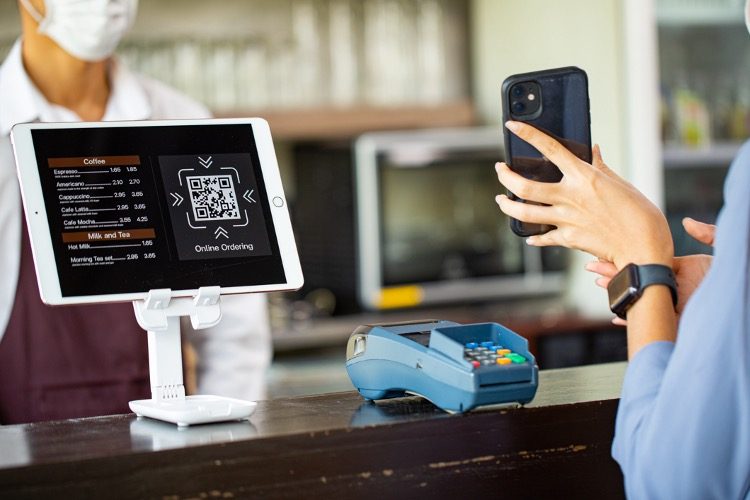
In the last financial year ending June 30, Australia recorded its first decrease in the amount of cash in circulation since 1966, when the country began using dollars instead of pounds.
The amount of cash fell by A$1.1 billion, with such a decline accelerating. By the end of November, the amount of cash had fallen by A$1.8 billion.
Although the volume of banknotes in circulation remains high in Australia, as they are broadly regarded as a store of wealth, actual cash usage has nosedived to just 13 percent of transactions, as per professional services firm Accenture, down from 27 percent before Covid-19.
Such a drop in cash usage has been swift. Just 10 years ago, about half of all transactions were cash-based.
“The pandemic truly accelerated the e-commerce side of the equation,” Ryan McQueen, the payments and open data lead at Accenture, admitted.
“It wasn’t just about buying online, but also ordering ahead.”
As Australia takes the lead globally toward becoming cashless, fears that communications outages or cyberattacks could severely undermine its economy have arisen.
Before Covid-19, Australia was already an early adopter of online banking, credit cards, and mobile-phone payment systems. Covid-19 and draconian government lockdowns expedited the cashless trend, as customers and retailers opted for contactless payments. Besides, work-from-home trends caused a shift to buy-from-home and online deliveries.
The head of Australia’s central bank, Michele Bullock, disclosed in a speech on December 12 that the number of payments that used cash dropped from 70 percent in 2007 to only 13 percent in 2022. Analysts have contended that this figure will fall to four percent by 2030.
Moreover, official data revealed that the number of automated teller machines (ATMs) in the country fell from 13,814 in 2017 to only 5,693 in 2023. During the same period, the number of bank branches plummeted from 5,694 to 3,588.
Such rapid changes have sparked worries.
Bullock maintained that cash was an important “back-up” during system outages or natural disasters, when electronic payments might be unavailable. She said cash also acted as a “means of payment for some people and is widely held for precautionary or store-of-wealth purposes,” where people hold cash as an easily accessible asset for future use.
“The (Reserve Bank of Australia) places a high priority on the community continuing to have reasonable access to cash withdrawal and deposit services,” she said.
The danger of system outages reared its ugly head during a nationwide outage that lasted about 12 hours in November entailing Singtel-owned Optus, Australia’s second-largest telecommunications company. Hundreds of thousands of businesses were impacted, including many that were reportedly unable to trade.
Dr. Shane Oliver, the chief economist at financial services company AMP, told The Straits Times he believed that Australia will eventually become a cashless society. He stated that while such a transition would prevent crimes such as money laundering, tax evasion, and muggings, it would lead to a greater risk of fallout from threats such as cyberattacks.
“The technology to allow more transactions with cards or electronic means has been falling into place for some time, and the pandemic pushed it along,” he said.
“A lot of merchants who previously imposed minimum limits on cards ditched their limits, and some had signs saying ‘card only’.… It has been driven by the collapse in costs of doing things electronically.”
Based on data from the financial technology firm FIS, Australia has the lowest use of cash in the Asia-Pacific, with cash accounting for just six percent of the value of all transactions.
The firm’s survey of 14 places found New Zealand had the second-lowest use of cash, with China and Hong Kong next on the list. Singapore, where 19 percent of the value of transactions used cash, ranked sixth. Countries with the highest use of cash were Thailand, Japan, and Vietnam.
Dr. Oliver pointed out that the move away from cash “feeds on itself” and raises the cost and difficulties of using it, as fewer merchants accept it and as cash becomes harder to access.
The suburb where he lives in Sydney, he noted, previously had six bank branches, which were then substituted by six ATMs, but it now has only one ATM remaining.
“There is a cost involved in distributing cash — printing the notes, having to go to the ATM, security companies looking after it and making sure it is secure,” he said. “If we move away from physical cash to electronic cash, it should be more efficient and presumably at a lower cost.”
The rising cost of managing cash has been underscored by revelations that a key transporter of cash in Australia, Armaguard, is making losses and thinks its present business model is not viable.
“The Australian cash industry has not rebounded after Covid as it has in other parts of the world,” the firm’s head, Mick Cronin, told The Australian Financial Review on November 30.
Challenges in accessing cash have become a particular concern in regional areas, where ATMs or bank branches can sometimes be difficult to locate.
Armaguard previously sounded the alarm that its distribution operations were unsustainable owing to dropping demand, igniting emergency meetings with Australia’s major banks. The Reserve Bank, which prints and issues currency, is also involved in the discussions.
The fear is that if Armaguard, which has a near monopoly over physical cash distribution in Australia, were to reduce or halt deliveries, there would be an instant shortage.
Such a shortage would affect the firm’s major clients, including banks, post offices, supermarkets, and other major retailers, which would limit the availability of cash for the community.
Armaguard had anticipated cash usage to rebound after stringent Covid-19 lockdowns were removed, but the anticipated recovery did not happen. Rather, many consumers and some businesses just ceased using physical currency altogether.
Such a shift toward a cashless society makes it less profitable for cash transit companies to sustain operations, particularly outside major cities.
This situation has prompted Australia’s competition regulator to permit banks to engage in emergency talks with Armaguard on a solution. Without an approval from the Australian Competition and Consumer Commission (ACCC), collective negotiations would violate competition rules, reflecting the gravity of present circumstances.
The ACCC has indicated that it would closely evaluate any proposed response, with a focus on ensuring that there is cash in remote and regional areas where bank branches are limited and people often access money via other sources such as Australia Post and retailers.
In light of this, the treasurer, Dr. Jim Chalmers, has tried to assure Australians that cash will still be accessible, taking into consideration the concerns of regional residents and older people, who often prefer to use cash.
He told The Sydney Morning Herald on December 15 that the federal government plans to work with banks, retailers, and regulators to draft a plan to keep cash available.
“If you want access to cash, you should be able to access cash,” he said. “That’s getting more difficult in a world where fewer people are using it.”
A 2023 global report by the U.S.-based financial technology company FIS divulged that Australians were among the least likely in the world to pay with cash, with Norwegians the only group spending less as a proportion of sales in the survey of 40 countries.
Australia had the lowest usage of cash in the Asia Pacific region in 2022, with New Zealand (seven percent of POS transactions), China (eight percent) and South Korea (11 percent) among the other major adopters of electronic payments, the report added. “While cash is projected to decline in every market we cover, there are vast differences in cash use in individual countries, ranging from the regional high of 56% of 2022 POS transaction value in Thailand to the regional low of 6% in Australia,” the same report found.



